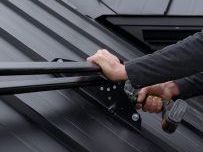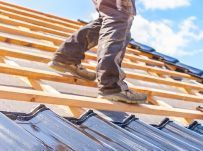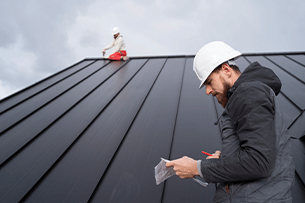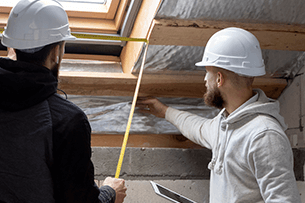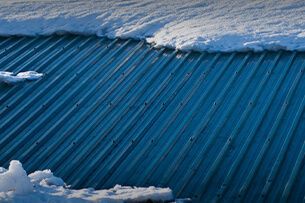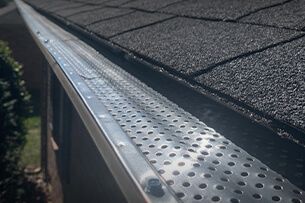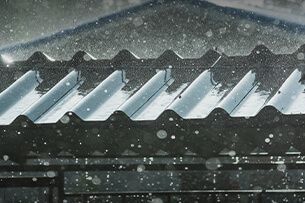The Importance of Winterizing Your Roof: A Comprehensive Guide
Winter brings picturesque landscapes covered in snow, cozy evenings by the fireplace, and a festive atmosphere. However, along with the beauty of the season, winter also brings challenges for homeowners, particularly in terms of protecting their properties. One critical aspect of winter home maintenance is the proper winterization of your roof. In this comprehensive guide, we'll explore why winterizing your roof is essential and provide practical tips to ensure your home is well-prepared for the colder months.
1. Preventing Ice Dams:
Ice dams are a common winter woe that can wreak havoc on your roof. Formed when snow on the upper part of the roof melts and then refreezes near the eaves, ice dams can lead to water infiltration, causing damage to your roof structure and interior. Proper insulation and ventilation are key components of preventing ice dams. Ensure your attic is well-insulated to maintain a consistent temperature on the roof and check that vents are unobstructed for proper airflow.
2. Protecting Against Heavy Snow Loads:
Accumulation of heavy snow on your roof can pose a structural threat, especially if your area experiences frequent snowfall. Roof collapses due to excessive snow loads are rare but not unheard of. To mitigate this risk, consider using a roof rake to remove excess snow periodically, particularly after heavy snowfall. Alternatively, consulting with a professional to assess your roof's load-bearing capacity may be beneficial.
3. Sealing Leaks and Gaps:
Winter winds can be relentless, driving cold air into even the tiniest gaps and cracks. Inspect your roof for any signs of leaks, damaged shingles, or gaps around vents and chimneys. Addressing these issues promptly can prevent heat loss, reduce energy bills, and keep your home comfortably warm during the winter months.
4. Gutter Maintenance:
Properly functioning gutters are crucial for directing melting snow and rain away from your home. Clean your gutters and downspouts before winter to prevent ice dams and ensure efficient water drainage. Consider installing gutter guards to prevent debris buildup, which can impede water flow and lead to ice dam formation.
5. Trimming Overhanging Branches:
Winter storms can bring heavy snow and ice, putting additional stress on overhanging tree branches. Trim branches that could potentially break under the weight of snow or ice to prevent them from falling onto your roof. This proactive measure not only protects your roof but also reduces the risk of damage to your home and ensures safety for you and your family.
6. Inspecting Flashing and Seals:
Flashing around chimneys, skylights, and vents plays a crucial role in preventing water intrusion. Check for signs of deterioration, rust, or damage, and replace or repair as needed. Additionally, inspect seals around roof penetrations and ensure they are intact to prevent water and cold air from entering your home.
7. Professional Roof Inspection:
While homeowners can perform some maintenance tasks, it's advisable to have a professional roofing inspection before winter sets in. A trained eye can identify potential issues that may go unnoticed and provide recommendations for repairs or improvements. A comprehensive inspection can catch problems early, saving you from costly repairs in the long run.
8. Attic Ventilation:
Proper attic ventilation is essential for regulating temperature and moisture levels in your home. In winter, ventilation helps prevent the buildup of condensation, reducing the risk of mold and mildew growth. Ensure that your attic vents are unblocked and functioning correctly to maintain a healthy and well-ventilated attic space.
9. Snow and Ice Removal:
While it's crucial to remove excess snow from your roof, it's equally important to do so safely. Use a roof rake or hire professionals to remove snow without causing damage to your roof. Avoid using sharp tools or excessive force, as these can lead to shingle damage. If in doubt, consult with roofing experts to determine the safest method for snow removal.
10. Insulating Attic and Roof:
Proper insulation is a key element in maintaining a consistent temperature on your roof, preventing ice dams and reducing heat loss. Check your attic insulation and add more if necessary. Properly insulating your roof also contributes to energy efficiency, keeping your home warmer and lowering heating costs.
In conclusion, winterizing your roof is a crucial step in protecting your home from the challenges that the winter season brings. From preventing ice dams and addressing leaks to
maintaining gutters and ensuring proper
insulation, these proactive measures can save you from potential headaches and expenses. By taking the time to winterize your roof, you not only enhance its longevity but also contribute to a comfortable and secure home environment during the colder months. If in doubt or if you encounter complex issues, consult with Basswood Roofing to ensure your winterization efforts are thorough and effective.

